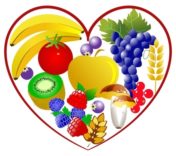Podcast: Play in new window | Download (Duration: 1:01:56 — 113.5MB)
It is the absence of “good” food in the diet that does us in.


It has long been a common held belief that eating the Standard American Diet (SAD) contributes to much disability and death. The consumption of sugar, salt, trans fats, red meat and processed meat have all been implicated in health challenges. Most of us have assumed that these foods are not healthy. The shocker is that these foods are at the bottom of the list of classes of foods that do us in. With the exception of sodium consumption, which is the number 1 factor, the other “bad” foods contribute far less to death and disability that we previously assumed.
In this interview with Jolie Root, we are discussing a recent study that was published in The Lancet medical journal. I want to thank Jolie for bringing this study to my attention and to thank Carlson Laboratories for sponsoring this interview.
The title of the study is “Health effects of dietary risks in 195 countries, 1990–2017: a systematic analysis for the Global Burden of Disease Study 2017”. This is a 27 year study including 195 countries. That fact alone is impressive. The results of the study are incredibly impactful. Jolie and I both consider this a paradigm shifting study, for us at least. Its impact on the rest of the world remains to be seen.
This study looked at diets around the world to determine what dietary factors were most associated with death and disability. If it’s not the “bad” foods we eat that kills us, what is it? This study reveals that it is the lack of “good” foods that does us in. Let that sink in. The results of this study give us the relative impact of the foods that we don’t consume. It’s not what we eat, it’s what we don’t eat. It can be said that it’s not that the “bad” food aren’t really bad, they are. It is more that the “bad” foods displace the “good” foods. It is the lack of the “good” foods in the diet. The focus needs to turn from what not to eat to what foods are most beneficial to eat. While this may seem simplistic on the surface, it is really profound, especially when considering the list of the “good” foods. If you want to be healthier, then eat “good” foods and a variety of them. The “good” must displace the “bad” foods.
Health effects of dietary risks in 195 countries, 1990–2017

Here is the takeaway: Reduce sodium, increase the “good” foods. This chart gives us a road map of the foods to consider and their relative importance. The most surprising fact to me was, excluding sodium, the most important factor is a “diet low in whole grains” followed by a “diet low in fruits. It is astounding to me that these three factors were the leading dietary risk factors for death and disability globally and in many countries.
Now consider the next 6 factors:
Diets low in nuts and seeds, low in vegetables, low in
seafood omega-3, low in fiber, low in polyunsaturated fatty acids, and low in
legumes. 11th on the list is diet low in calcium.
Bottom of the list include diets high in trans fats, high in sugar sweetened beverages, high in processed meat, low in milk and high in red meat. Look at the chart and consider the relative importance.
We’ve been blaming the wrong thing. We tell people “don’t eat those bad foods”. We should be teaching the importance of consuming a variety of the best foods. Avoiding certain foods does not automatically correlate with eating better foods. It is choosing the “good food” and focusing on the ones that have the greatest impact. This study goes a long way to helping us identify what those most important foods are. It allows us to see what may be missing in our food choices and evaluate the relative importance.
If you are going to make changes, cut down on sodium. Then consume more whole grains and fruits. Then work your way down the list and add more variety where needed. This all comes full circle and brings us back to the importance of a variety natural foods as foundational for health. All natural foods are important in the diet, just some are more important than others. Now you know.
About Jolie Root: Jolie is the Senior Nutritionist/Educator at Carlson Laboratories. She began as a natural products retailer who evolved into a career in education in the health sciences. She is a nutritionist and a nurse. She understands both the science and the practical application of good nutrition for health. Jolie hosts a weekly radio show called Food for Thought which is heard in New York, Florida and online.











{ 2 comments… read them below or add one }
I as you was surprised with some of the findings in that study. I listened to the podcast. I wondered why there was no questioning the study by either of you. I went to the study and read some of the findings. Is there no distinction between sodium which is in practically all packaged food and sea salt or Himalayan salt ? Or grains that have all kind of issues for many people and maybe organic grains?
The study was over 27 years and across 195 countries. The scope of the study was macro in nature. Most people in the world don’t have the resources to indulge in better quality foods. One of their conclusions is the challenges in the distribution and affordability of better quality foods. Cultural preferences are also very strong factors.
Thanks for listening.